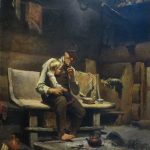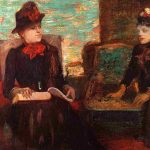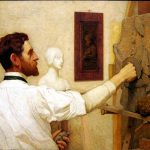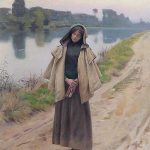Ernesto de la Cárcova, an Argentine painter, was born on December 12, 1866, in Buenos Aires, Argentina. He emerged as one of the leading figures of the Argentine academic art movement and played a significant role in shaping the artistic landscape of Argentina during the late 19th and early 20th centuries.
De la Cárcova’s artistic journey began at the National Academy of Fine Arts in Buenos Aires, where he studied under the guidance of prominent Argentine artists such as Eduardo Sívori and Reynaldo Giudici. Influenced by the European academic tradition and the nationalist sentiment sweeping through Argentina at the time, De la Cárcova’s early works reflected a blend of realism and romanticism.
One of De la Cárcova’s most enduring themes was his exploration of Argentine history and identity. His paintings, such as “Sin Pan y Sin Trabajo” and “La Vuelta del Malón,” depicted scenes of social injustice and national heroism with a sense of drama and emotion. De la Cárcova’s ability to capture the struggles and triumphs of the Argentine people endeared him to audiences across Argentina and established him as a leading voice in Argentine art.
In addition to his paintings, De la Cárcova was also known for his murals, which adorned public buildings and spaces throughout Buenos Aires. His murals, such as those at the Argentine National Congress and the Teatro Colón, celebrated the history and culture of Argentina with a sense of grandeur and scale.
Despite facing personal and professional challenges throughout his life, including struggles with his health and financial difficulties, De la Cárcova remained dedicated to his art. His unwavering commitment to artistic expression and his unique perspective earned him widespread acclaim as one of Argentina’s most beloved painters and muralists.
De la Cárcova’s legacy continues to resonate in modern-day Argentina, where his paintings and murals are celebrated for their artistic excellence and cultural significance. His works are featured in museums and galleries across Argentina and are treasured as a testament to the rich heritage and enduring spirit of Argentine art.
In conclusion, Ernesto de la Cárcova’s contributions to Argentine art are a testament to his love for his homeland and his ability to capture its beauty and complexity on canvas and in murals. His works continue to inspire and captivate audiences, ensuring his place as one of Argentina’s most revered cultural figures.






